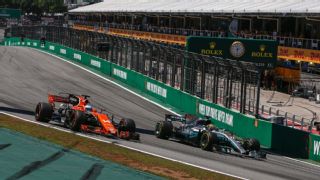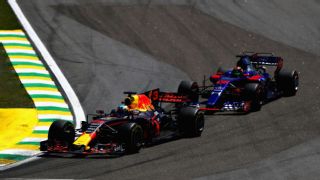|
A look at the most important thing each team needs to do or change as we enter a new calendar year and Formula One season, starting with the bottom five from last year's championship. SauberBuild a car worthy of the Alfa Romeo name  Since the introduction of the current engine regulations in 2014, Sauber has dropped from the status of solid midfield runner to that of perennial backmarker. The financial realities of basing a team in Switzerland have hit hard and had it not been for a change of ownership in 2016 the team may have disappeared from the grid altogether. But with Alfa Romeo sponsorship secured for the next three seasons and an up-to-date Ferrari engine in the back of the car once more, Sauber has all the ingredients to start its recovery in 2018. The downside is that one of the few remaining independent teams is now a Ferrari B-team. While Sauber has long been tied to Ferrari by engine supply deals, the introduction of Alfa Romeo sponsorship means it will vote with Ferrari at the F1 Commission and toe the line in paddock discourse. The situation says more about the difficulties for independent teams to survive in F1 than it does about Sauber, but it means one of the last remaining independent voices in the paddock has been lost. For the team that's unlikely to matter as long as the results come in and salaries are paid on time, while the addition of promising Ferrari junior driver Charles Leclerc to its line-up will generate plenty of interest over the course of the year. McLarenProve McLaren is still capable winning races  Walking around McLaren's expansive factory it's hard to believe the team hasn't won a race since the end of the 2012 season. The results of recent years simply weren't good enough and for that reason it couldn't go another season with Honda power. But while there is no doubt that the Honda engine is the worst of the lot, it's not entirely clear if the McLaren chassis was as good as the team made out in 2017. The management would often point to speed trap data in order to highlight Honda's failings, but it was also clear that McLaren was doing little to help by running a large rear wing at the majority of tracks. So while the GPS data showed the McLaren was among the fastest through the corners, it wasn't clear if that was achieved by sacrificing straight-line speed. Regardless, a Renault power unit should represent a step forwards in 2018 and rivals Red Bull will provide the ultimate barometer for McLaren. Renault is known for providing equal equipment to its customers, so there will be nowhere to hide if the McLaren is still several tenths shy of Red Bull. And with Fernando Alonso eager to prove he still has what it takes to be a three-time world champion, you can guarantee the car will be pushed to the absolute limit in 2018. HaasMaintain development throughout the year It's important to remember that 2017 was only Haas' second year on the F1 grid. In recent history, no start-up team has been as successful in its first two years as the American outfit and in that sense Haas has exceeded expectations. But Formula One does not reward past achievements and despite a strong start to 2017, Haas finished the year with one of the worst performing cars on the grid. One of the biggest issues Haas faced in 2017 was turning up to each round not knowing how the car would perform. At times the team arrived at races with a perfect baseline setup and the weekend went well, but all too often it would be chasing balance issues throughout a weekend - often making the car worse with setup changes rather than better. With two years' worth of data on each circuit, the team will hope to make progress in 2018 but it has to gain a better understanding of how to turn on the tyres on any given track. Toro RossoUse the Honda deal to step out of Red Bull's shadow  It seems odd that a B-team can also be a works team, but that is the situation Toro Rosso finds itself in next year. Although Toro Rosso will never be the master of its own destiny while it is owned by Red Bull, an improved Honda engine could give it the potential to make a big step in 2018. Of course, it could also hamstring the Toro Rosso, which will face the challenge of being unable to share as many components with the senior team as it did under its Renault deal, but if everything slots into place it will make the Toro Rosso a very interesting team to follow. Key to a good season either way, will be improving the rate of development on the car. Toro Rosso made a promising start to the 2017 season but in the final six races it scored just one point. The situation wasn't helped by a series of driver changes during that time combined with regular engine failures, but even when the car was performing it was still further off the pace than it had been earlier in the season. The only downside to Toro Rosso's unusual position in 2018 is that it's damned if it succeeds and damned if it fails, as a successful Honda package next year will see Red Bull swoop in and become the Japanese manufacturer's works team in 2019. RenaultStart scoring the results expected of a manufacturer team  Since it made its return as a manufacturer team in 2016, Renault has made clear that it will take several years to return to the top. The plan is to be fighting for a title by 2020, which means it has just two years left to put itself in a position to win multiple races per season. Red Bull's struggle since its last championship in 2013 has proven how difficult it is to fight Mercedes under this current set of regulations, so Renault needs to accelerate its performance throughout 2018. With McLaren and Red Bull as its engine customers next year, it is going up against two of the best chassis manufacturers in the business. That will provide a useful barometer of performance, but by the end of the season it needs to be outperforming at least one of them to be able to convincingly claim that 2020 is still its target year. As Ferrari found out in 2017, finding the final few tenths of performance and the necessary consistency in reliability is often the hardest part, and Renault isn't even close to that at the moment. Continued January 31...
|
